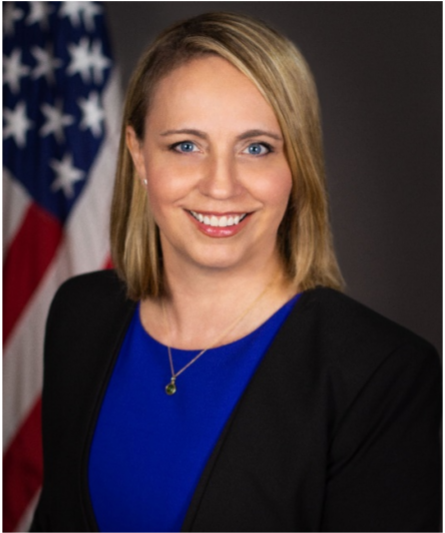The government's top compliance issues include pandemic response spending, nursing home care, and healthcare inequities
The U.S. Department of Health and Human Services (HHS) top compliance priorities are led by spending in the COVID-19 pandemic response, as well as issues that include the quality of nursing home care and social inequities in access to health services, a top agency investigator said in a recent industry speech.
Christi A. Grimm, principal deputy inspector general for the HHS Office of Inspector General (OIG), identified agency priorities in a keynote speech at the Healthcare Compliance Association Compliance Institute. The OIG oversees the HHS’s $2.2 trillion in program expenditures across the department’s more than 100 programs, including Medicare and Medicaid.
In addition to the pandemic response, nursing homes, and healthcare inequities Grimm’s address rounded out a list of five top priorities, adding telehealth services and program-integrity information. Grimm raised five additional compliance focus areas — combating substance use disorder; prioritizing cybersecurity; enforcing information-blocking; implementing value-based care; and strengthening managed care program integrity — but did not discuss them in detail in her speech.
Overseeing COVID-19 relief & response
The OIG’s first priority will center on audits, evaluations, and investigations that examine the pandemic response, which will likely remain a top priority for the next several years, Grimm said. The pandemic brought out the best from many healthcare workers and scientists, but it has also led to “bad actors exploiting the pandemic to cause harm.”
The OIG has received more than “2,400 complaints to [its] hotline related to purported COVID fraud” some leading to enforcement actions already. Grimm noted a Colorado physician provider was recently indicted for allegedly stealing from multiple provider-assistance programs to fund personal travel and home improvements. “We are using every tool in our arsenal, pursuing criminal or civil charges, seeking exclusion or referring for suspension and debarment from programs, and working to recover ill-gotten gains,” Grimm added.

Although Grimm acknowledged the potential for healthcare access through telehealth, she also said it is “important that new policies and technologies with potential to improve care and enhance convenience achieve these goals and are not compromised by fraud, abuse, or misuse.”
Being able to effectively expand telehealth and ensure program integrity will require effort on fronts not generally considered compliance areas, such as cybersecurity, interoperability, and patient access to technology. Expanding the reach of telehealth will also require identifying “key program integrity factors” such as policy and payment changes, according to Grimm.
Quality of care in nursing homes
Grimm noted that the pandemic has underscored the vulnerability of nursing homes and long-term care patients. Although facility residents total less than 1% percent of the nation’s population, they make up 34% of COVID-19 deaths, she said.
Nursing home problems such as inadequate staffing levels and data reporting pre-date the pandemic but was worsened by it, Grimm explained, adding that the OIG will work on quality of care, patient safety, and improving agency and state oversight of facilities. The OIG will also continue its work on infection control, facility-initiated discharges, and the overuse of psychotropic drugs in facilities, she said, noting the OIG will be “laser focused on seeing positive change” at nursing homes.
Reversing healthcare inequities
The COVID-19 pandemic “demonstrated how stark racial and socioeconomic disparities in our country have significant negative effects for health outcomes,” Grimm noted. Data from the U.S. Centers for Disease Control and Prevention (CDC) shows that American Indian or Alaska Native individuals are 2.4-times more likely to die from COVID-19 than White Americans. For Hispanic or Latino Americans, the rate is 2.3-times higher and for Black Americans it is 1.9-times higher.
This means that not only did the pandemic “disproportionately affect communities of color,” it also worsened the impact of disparities related to social determinants of health.
To OIG is bringing “equity to the forefront” by considering how to incorporate objectives related to equity and social determinants of health onto health experiences and outcomes. It is also examining the data underlying disparities to determine if it is complete and how best to leverage it to address the issue.
Modernizing compliance
Finally, Grimm explained that the OIG is working to make “program integrity and compliance easier across the health care industry,” and the agency hopes that making it easier to access and use information that supports compliance work will “spur innovation and improve compliance programs.”
The OIG also is looking at process changes required by the pandemic to determine what worked well and what should continue when the pandemic subsides. It is also considering how to automate systems such as the List of Excluded Individuals & Entities that now require a manual process for each of the 26 million site visits annually.
In addition to the compliance areas, Grimm acknowledged provider concerns “about the off-ramp when emergency flexibilities expire after the pandemic ends.” She assured the audience that the OIG would take a “reasonable and fair approach” that would allow providers to adjust as flexibilities are phased out.







